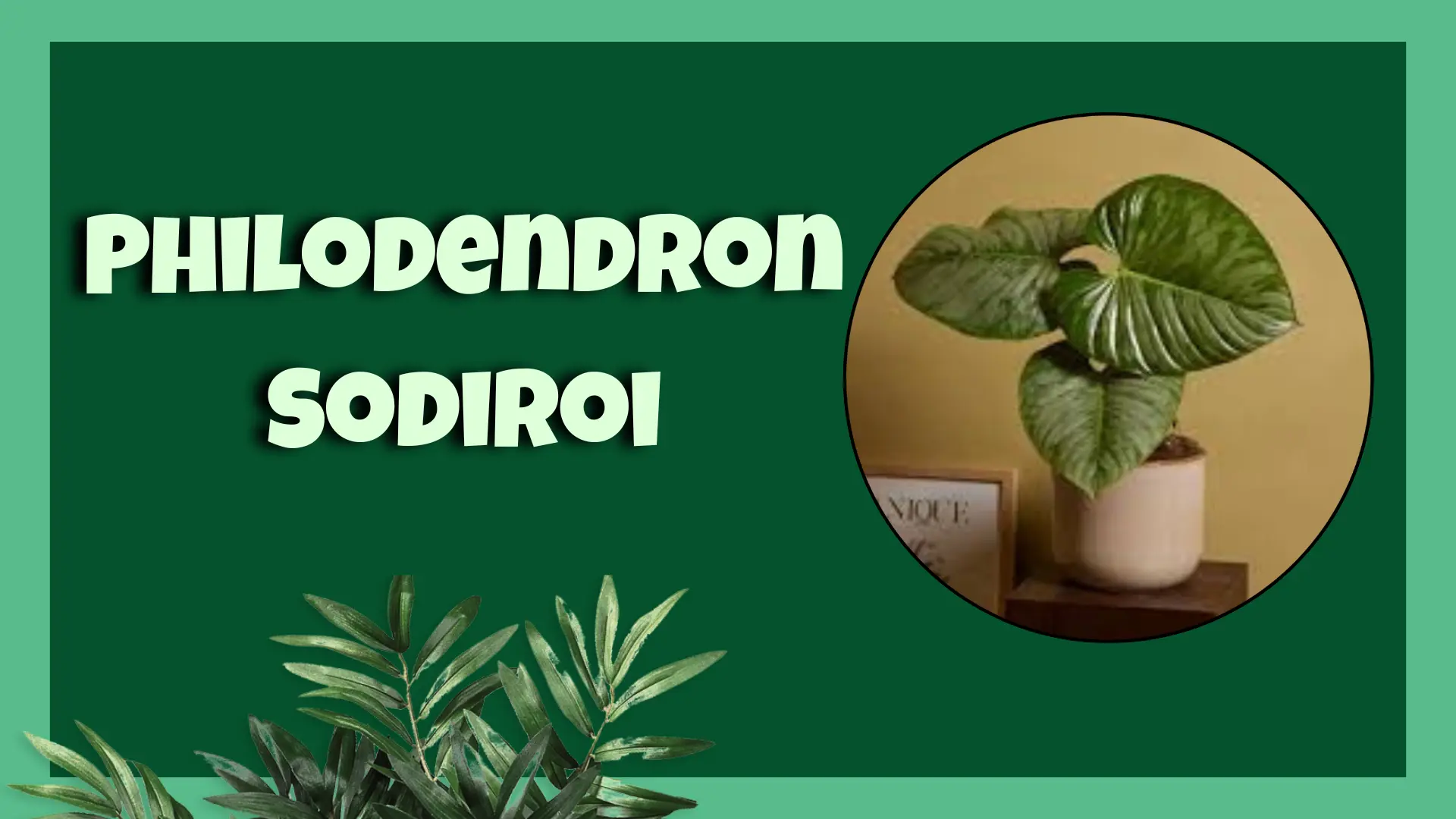If you’re a plant lover who enjoys collecting rare and beautiful foliage, Philodendron sodiroi is a gem worth having. Known for its silvery, heart-shaped leaves and climbing growth habit, this philodendron adds an exotic touch to any home. It’s not just about looks—this plant also has a fascinating history and relatively easy care needs once you understand its requirements.
Origin and History of Philodendron Sodiroi
Philodendron sodiroi hails from the tropical rainforests of South America, particularly Ecuador. Named after Father Luis Sodiro, a botanist who studied Ecuadorian flora, this species naturally climbs trees in its native environment. Its love for shade and humidity comes from these rainforest roots.
Why Philodendron Sodiroi is Special
Unlike common philodendrons, sodiroi is prized for its shimmering silver markings that spread across its lush green leaves. Each leaf is unique, almost like a painted canvas. While many philodendrons boast big leaves, the silvery splash makes sodiroi stand out as a statement piece in indoor plant collections.
Philodendron Sodiroi vs Similar Varieties
Since philodendrons often look alike, it’s easy to confuse sodiroi with others.
Philodendron Sodiroi vs Philodendron Mamei
Both have silver patterns, but mamei’s leaves are rounder with less pronounced heart shapes, while sodiroi’s leaves are sharper and more defined.
Philodendron Sodiroi vs Philodendron Plowmanii
Plowmanii has crinkled leaves and a crawling growth style, unlike sodiroi’s climbing nature. If you want a trailing plant, sodiroi wins.
Ideal Growing Conditions
To thrive, sodiroi needs an environment similar to its tropical origins.
- Light: Bright, indirect light is best. Avoid harsh sun, which can scorch the silver markings.
- Temperature: Keep it between 65–80°F (18–27°C). It dislikes sudden drops.
- Humidity: At least 60% humidity is ideal. A humidifier or pebble tray works wonders.
Best Soil Mix for Philodendron Sodiroi
A well-draining, chunky soil mix is key. Combine orchid bark, perlite, and high-quality potting soil for the perfect blend. This mix ensures roots get enough air while retaining necessary moisture.
Watering Routine and Tips
Philodendron sodiroi prefers evenly moist soil but not soggy conditions.
- How often to water: Water once the top 2 inches of soil dry out.
- Overwatering signs: Yellowing leaves, mushy stems, or root rot.
- Underwatering signs: Crispy edges, drooping leaves, and slowed growth.
Fertilization Guide
Feed your plant during its growing season (spring and summer).
- Best fertilizers: A balanced liquid fertilizer diluted to half strength.
- Schedule: Every 4–6 weeks is plenty. Avoid winter feedings as growth slows down.
Potting and Repotting Philodendron Sodiroi
Repot every 1–2 years or when roots outgrow the pot.
- When to repot: Early spring before active growth begins.
- Best pots: Choose pots with drainage holes to prevent root rot.
Pruning and Maintenance
Pruning isn’t just for aesthetics—it helps maintain health. Trim dead or yellow leaves and cut back leggy growth. This also encourages fuller, bushier growth.
Propagation Methods
Want to multiply your sodiroi? Propagation is simple.
- Stem cuttings: Cut a stem with at least one node and healthy leaf.
- Water vs soil propagation: You can root it in water for faster visibility or plant directly into soil for stronger root growth.
Common Problems and Solutions
Even with care, issues can arise.
- Yellow leaves: Usually from overwatering.
- Root rot: Caused by poor drainage; repot in fresh soil.
- Pests: Spider mites and mealybugs love philodendrons. Wipe leaves with neem oil to prevent infestations.
Is Philodendron Sodiroi Toxic?
Yes, like most philodendrons, sodiroi contains calcium oxalate crystals. These can irritate pets and humans if ingested. Keep it out of reach of curious pets and children.
Styling Ideas and Indoor Decor Tips
Philodendron sodiroi makes a stunning indoor plant. Place it on a moss pole to encourage climbing or let it trail from a hanging basket. Its silvery leaves look incredible against plain white or wooden backdrops.
Where to Buy Philodendron Sodiroi
This plant isn’t always easy to find in local nurseries, but you can score one from online plant shops, specialty sellers, or rare plant collectors. Be cautious of imitations and always buy from trusted sources.
Conclusion
Philodendron sodiroi is more than just another plant—it’s a living piece of art. With its heart-shaped silver leaves, climbing habit, and easy-going nature, it’s perfect for anyone who loves statement plants. By giving it the right light, humidity, and soil, you’ll enjoy years of healthy growth and striking beauty.
FAQs
1. How big does Philodendron Sodiroi grow?
With proper support, it can climb several feet indoors, producing large, striking leaves.
2. Can Philodendron Sodiroi grow outdoors?
Yes, but only in warm, humid climates (USDA zones 9–11). In cooler regions, keep it indoors.
3. How fast does Philodendron Sodiroi grow?
It grows moderately fast when provided with a moss pole, proper light, and consistent care.
4. What makes sodiroi different from other philodendrons?
The unique silver variegation and its sharp heart-shaped leaves set it apart from look-alikes.
5. Is Philodendron Sodiroi rare?
Yes, it’s considered a rare collector’s plant, especially large mature specimens.

